Have you ever tried VR live streaming using the RICOH THETA 360-degree camera on YouTube, Facebook, and other platforms?
Due to the corona pandemic, more and more people want to livestream in 360 degrees with THETA.
THETA Z1 and V support 360-degree live streaming, but we often hear users say that the settings are difficult or they want to try it but don’t know what kind of situation suits 360-degree streaming.
So, the THETA marketing team actually tried live streaming on YouTube using THETA Z1, and shared their tips for doing it smoothly and what situations it’s best for!
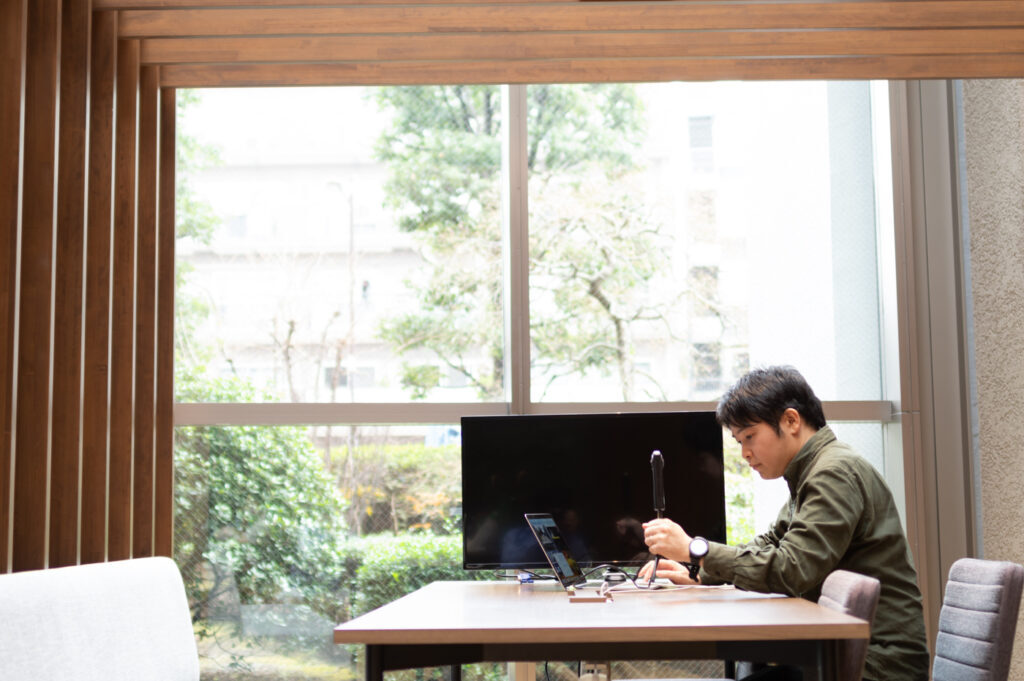
What you need for THETA live streaming
If you have a computer with relatively high specs such as a MacBook Pro, you just need basic hardware and software.
In the THETA range, only THETA Z1 and THETA V (sold out) support live streaming. Older THETA models could shut down occasionally due to internal heat generation when live streaming for extended periods. Last year, THETA Z1 received a firmware update allowing it to record and stream for up to 24 hours* in an ambient temperature up to about 30 degrees celsius.
*Not a guaranteed value
Today, we tried live streaming with an updated THETA Z1.

Attach a tripod and the extension adapter TE-1 to THETA Z1
Required hardware
■ THETA Z1
■ Theta Extension TE-1
*An accessory required to supply power to THETA while it is situated on a tripod.
■ Tripod
■ PC
*For PC users, we recommend Windows 10 with Core i5 processor, and for Mac users we recommend at least a Macbook Pro.
■ USB cable for connecting THETA to your computer
*We used THETA Z1 and a MacBook Pro, so a USB Type-C to USB Type-C cable was required.
Required software
■ Streaming software; OBS Studio (free)
■ Driver for live streaming; RICOH THETA UVC 4K (free)*Windows only. Not required for Mac.
Click here for detailed procedure.
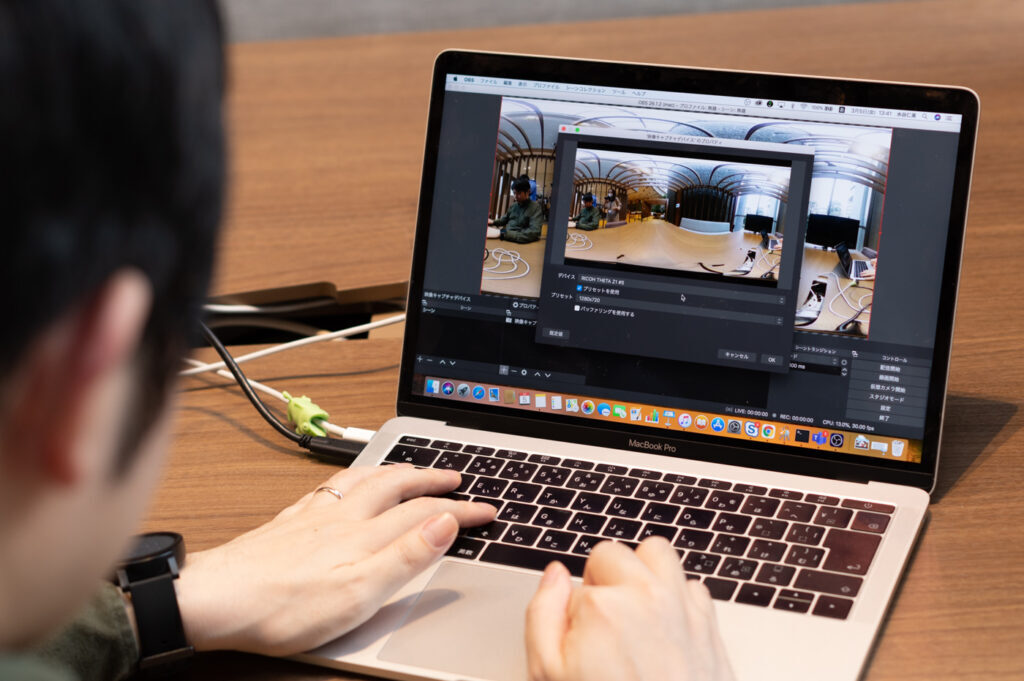
Setting streaming via THETA Z1 in OBS Studio
Network environment
THETA Z1 can stream live in 4K. However, the network environment is a key factor for stable 360-degree 4K streaming. We recommend a fiber optic internet connection and wired network (LAN).
To check the status of your network environment, search for “Internet speed test” on Google and test your network speed.
The internet speed test will let you know how many Mbps your connection can handle.
Estimated required upload speed
■For 4K streaming; 15 to 20 Mbps or more
■For 2K streaming; 3 to 5 Mbps or more
For this test we used Wi-Fi. See how it worked out for us.
Taken with THETA SC2: Trying live streaming with Z1
Get the stream started!
We set up YouTube and OBS, and gave it a shot!
First of all, we set up 4K streaming on OBS according to the guide on the official website.
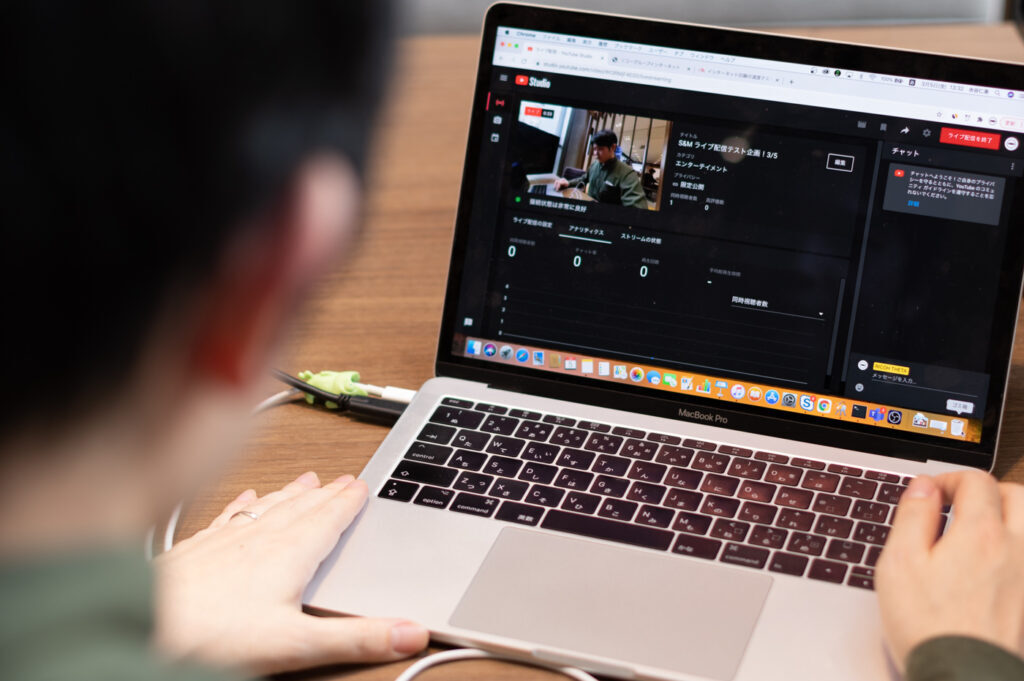
Setting up live streaming on YouTube
But there is a catch!
Although we were able to livestream in 360 degrees, the frame rate was very low, not smooth at all. Actually, our “network speed test” showed about 10 Mbps. It seems 4k streaming is hard in this network environment after all.
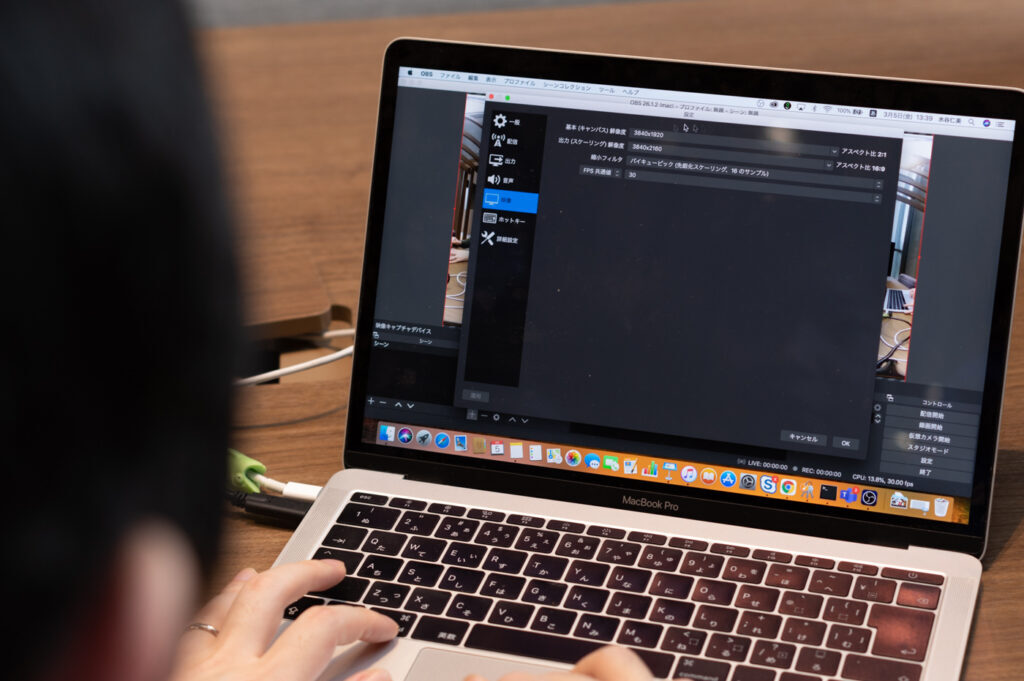
Setting scaling in OBS Studio
So, we decided to do it in 2K (FHD).
We changed the setting from ①3840 x 2160 to ③1920 x 1080 as below (Select “Settings”, “Video”, and “Output (Scaling) Resolution”)
① 4K 3840 × 2160
② 2.5K 2560 × 1440
③ 2K 1920 × 1080
After doing so, both the audio and video became smoother!
Depending on the network environment, it may be necessary to try a smaller resolution. Start with 4k and work your way down.
We ended up using 2K/FHD.But even with 2K, the audio and image quality are great.

Watching a livestream on YouTube on a smartphone
While streaming, sometimes little black circles (●) and vertical black lines may appear on the screen. In that case, in OBS, go to Settings, Video, and Output (scaling) as mentioned above.
In order to stream 360-degree video clearly on YouTube, the output (scaling) must always be a 16:9 ratio. Also, use the cursor to widen and adjust the image so that black spaces are not visible in the OBS preview window.

Please watch the following video for details and notes on how to set up YouTube and OBS!
Video: Try live streaming with THETA Z1!
Sample use cases
During live streaming on THETA, THETA and your PC must always be connected with a USB cable. So, THETA streaming is suitable for situations when THETA doesn’t move during the stream.
First, we tried doing a livestream introduction or company reception. We put THETA on a tripod on a table for this stream.
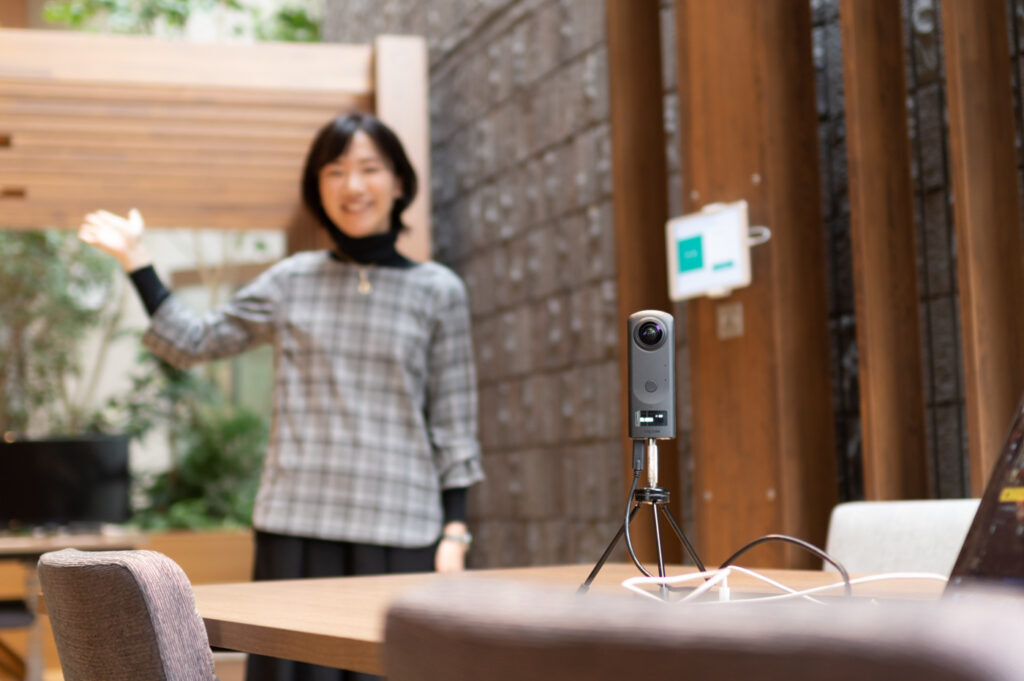
Live streaming scene of a company introduction
Next, we tried live streaming a team meeting for other members who were working at home. Due to the corona pandemic, all of us have been often working from home for the past year, and we have fewer chances to meet at the office. It was interesting to have other members watch us talking at the office.
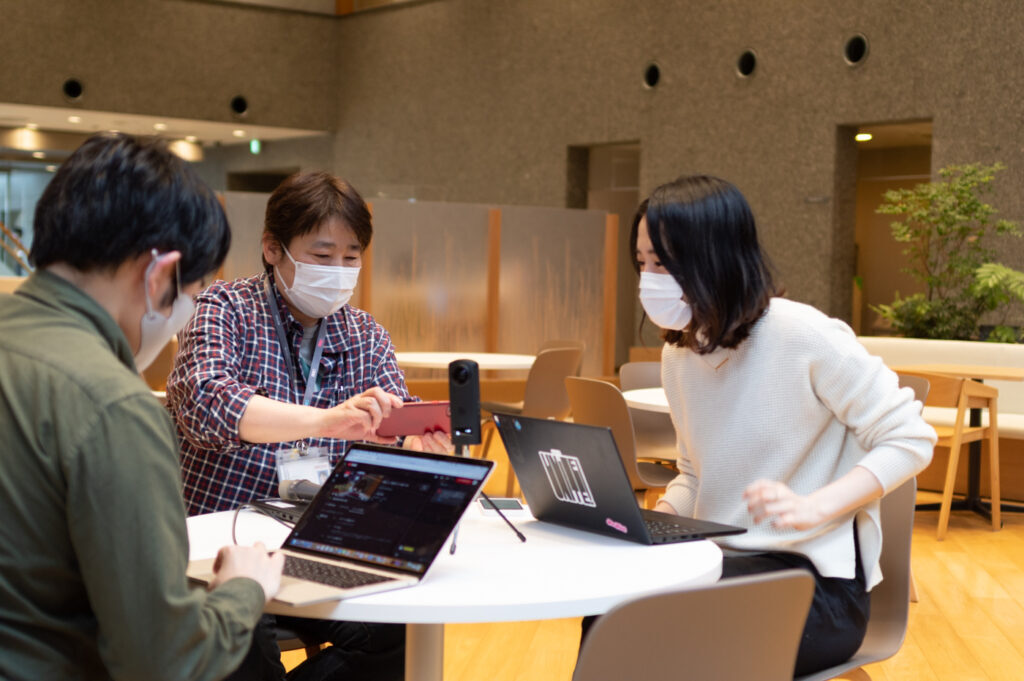
Live streaming around a THETA Z1
We tried to communicate with members who were watching the stream on YouTube by using the chat function. We noticed that there seems to be a lag on the chat, and realized that YouTube 360-degree live streaming seems to have a delay of about 30 seconds.
Since 360-degree video uses more bandwidth than a normal video, there is usually a delay of about 20 to 30 seconds. So, streaming is more suitable for one-way viewing rather than interactive communication.

Screenshot of the test live streaming
Streaming with THETA is useful for holding events with a limited number of participants and events held in a remote place, or to give viewers a secondary view of the surroundings.
Tricks and Traps
・Wired network (LAN) environment is preferable.
・For long term streaming, a power supply is required (for the PC and THETA).
・ THETA must be mounted on a tripod (because of the wired connection with the PC).
・ The stream will be delayed by 20-30 seconds.
So, it is more suitable for one-way content.Even though there are some hurdles, as long as the environment is suitable, 360-degree live streaming works very well with THETA! Please give it a try, and find your best scene!
Wireless Live Streaming plug-in
Up to here, we introduced a stable and high-quality streaming method via PC and a LAN connection.
However, THETA can also stream wirelessly by using a plug-in called ‘Wireless Live Streaming’. It allows you to connect THETA to a wireless access point and easily stream in 360 degrees via YouTube without using a PC. You don’t need to carry and set up any equipment, so it is much easier.

We hope THETA 360-degree live streaming can make your life better!




.jpg)


.svg)




